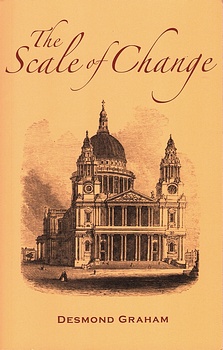The Scale of Change
From the proto-communist ‘Diggers’ of Surrey, through to Thomas Bewick’s radical Tyneside and on to a wet St George’s Day in Dover, the opening sequence, ‘Class’, offers a ‘condition of England’ poem for our times: as light and readable as it is ambitious in scope. The second half of this book, ‘Rembrandt’s Last Pupil’, quietly reveals an aesthetic which proves to be no less political and contemporary. Together the two sections provide the scale on which this collection subtly and poignantly measures change.
Wren Churches
I loved them –
cleared of clutter
mainly solid blackened oak
keeping reflection
to itself
made to be seen
discreetly
teach you
for the first time
how perspective works
and if the organ
piped up its patterns
and the cupola at last
cupped hand to ear
to bring you Bach
you understood
how god was moved
out of the machine
turned into proportion
balance and scale
how measurement took over
angle and leverage
structure depth and weight
like the sentences
of Pope
repeat develop vary
pause extend
and counter
return and reinstate
then close
*
and round the corner
as that poet dreaded
paper money
moved
so unsubstantial
long before the first
computer
all the world’s wealth
passed through here
like flour down a funnel
packed and stored
and sent across the water
then sent back
multiplied
by millions
the Amerindians
the Gold Coast captives
some noble savages
located near Tahiti
paid the price
you almost hear it
if you listen closely
travelling round
St Paul’s dome
as a whisper
***
A Question of Scale
not of balance
but of proportion
how great
and how small
all that there is
held in the crook
of a finger
all that happens
no more than dust
by a road
how big our faces
seen in mirrors
how small
when waving back
no need to adjust
a scale
it forms around you
provided you look
and know
if you can
how long
your eyes may settle
and when
to turn back
from The Scale of Change I: ‘Class’
from The Scale of Change II: ‘Rembrandt’s Last Pupil’
